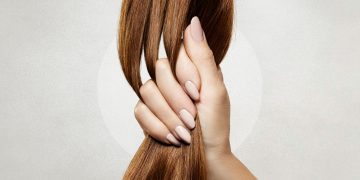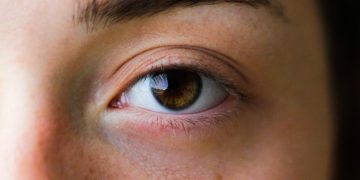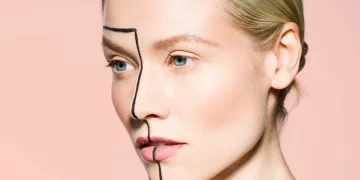In the modern era of aesthetic medicine, dermal fillers have become one of the most sought-after treatments for rejuvenation and contouring. They promise instant results, minimal downtime, and the possibility of turning back the clock without a single surgical incision. Yet with rising demand has come a rising problem — overfilled faces. What was once a subtle enhancement has, in many cases, become an aesthetic imbalance that distorts natural beauty and can even pose medical risks.
Why does this happen, and how do we prevent it? To answer that, we must explore how aesthetic balance works, why fillers migrate, and what options exist when things go too far.
1. When Enhancement Crosses the Line: Understanding Aesthetic Balance
A successful aesthetic treatment is built on harmony. It respects the natural structure of the face — its proportions, angles, and unique anatomical features. Overfilling disrupts this equilibrium and creates an exaggerated, often unnatural appearance.
Common signs of an overfilled face include:
- Puffy, “pillow-like” cheeks
- Distorted under-eye area
- Widened mid-face
- Overly projected lips
- Blunted facial contours
- Loss of natural facial expressions
Instead of looking refreshed, clients may find themselves looking swollen, heavy, or “inflated.”
But how do people end up this way?
The Psychology Behind Overfilling
Many patients experience what practitioners call “filler blindness” — a gradual desensitization to changes in their own face. Because fillers add volume slowly over several sessions, individuals may stop recognizing what “normal” looks like.
Social media also plays a powerful role. Heavily edited images and face filters distort expectations about volume, symmetry, and youthfulness. What looks balanced in a filtered selfie often looks unnatural in real life.
The result is an aesthetic drift: the more people get, the more they think they need.
2. The Medical Problem: Filler Migration Explained
While overfilling is often an artistic issue, filler migration is a clinical one — and it’s surprisingly common. Migration occurs when the injected product moves away from the intended site and settles elsewhere, creating lumps, bulges, or distorted contours.
Why Does Filler Migrate?
Several factors contribute:
- Overfilling an area beyond its anatomical capacity
- Improper injection depth or placement
- Using soft fillers in high-mobility zones
- Excessive pressure or massage after treatment
- Frequent topping up before the previous filler has dissolved
- Poor injection technique or low practitioner experience
The lips and under-eye areas are particularly prone to migration because the tissues are thin and delicate.
Signs of Filler Migration
- A ridge above the lip border (“duck lips”)
- Puffiness under the eyes
- Uneven facial texture
- Hard nodules or lumps
- Blurred or distorted facial lines
Migration not only looks unnatural — in rare cases, misplaced filler can compromise blood flow or cause inflammatory reactions.

3. When Things Go Wrong: The Rise of Reversal Treatments
Fortunately, most dermal fillers used today are made from hyaluronic acid (HA), a substance that can be safely dissolved using hyaluronidase. Reversal has become more common as clients seek to correct overfilling or migration issues.
How Reversal Works
Hyaluronidase is injected into the overfilled or migrated area, breaking down the HA filler within hours to days. Depending on the volume, multiple sessions may be needed.
When to Consider Reversal
Patients should consult a practitioner if they experience:
- Persistent puffiness
- Visible lumps
- Loss of natural facial movement
- Asymmetry or contour distortion
- A “weird” or unfamiliar appearance
For many, reversal can be liberating. It restores normal proportions and offers a clean slate for future, more conservative treatments.
The Emotional Impact of Reversal
Patients often describe a sense of relief after dissolving excess filler. Some say they “finally recognize themselves again.”
This emotional reset is critical — it reinforces the value of natural-looking enhancements and improves long-term satisfaction.
4. The Art of Subtlety: How Experts Avoid Overfilled Faces
Top aesthetic practitioners work with one core philosophy: less is more. Instead of chasing volume, they focus on structure, balance, and natural expression.
Best Practices for Safe, Natural Filler Use
- Conducting a full facial analysis before injecting
- Using conservative amounts
- Prioritizing structural areas over soft tissue bulking
- Building results slowly over time
- Following the patient’s natural bone architecture
- Saying “no” when necessary
Ethical injectors guide patients away from unrealistic expectations, even if it means declining treatment.
Modern Techniques That Improve Safety
- Cannula use to reduce risk of vascular injury
- Deep structural injections rather than surface-level plumping
- Ultrasound-guided filler placement for increased precision
- Layered volumization for long-lasting, natural results
These advancements help ensure filler enhances — not overwhelms — the face.
5. Why Natural Results Are the Future of Aesthetic Medicine
As conversations about overfilled faces go viral on social media, the industry is shifting. Patients are increasingly seeking “underdone,” refreshed looks rather than exaggerated volume.
Trends Driving a Return to Natural Beauty
- A growing backlash against artificial aesthetics
- Greater awareness of filler complications
- Rising demand for subtle, preventative treatments
- Popularity of “skin-first” rejuvenation (e.g., lasers, microneedling)
- Increasing emphasis on facial individuality
The future of aesthetics lies not in maximizing volume, but in maximizing authenticity.
Natural enhancement is the new luxury — and overfilled faces are becoming a cautionary tale rather than a trend.
6. Final Thoughts: Beauty Should Honor Your Natural Identity
Dermal fillers, when used correctly, are powerful tools for rejuvenation. They can soften lines, restore youthful contours, and boost confidence. But when used excessively, they distort the very features that make us unique.
The key is balance — respecting the natural harmony of the face and choosing skilled practitioners who value artistry over volume.
Enhancement should never erase identity.
It should reveal the best version of it.












































